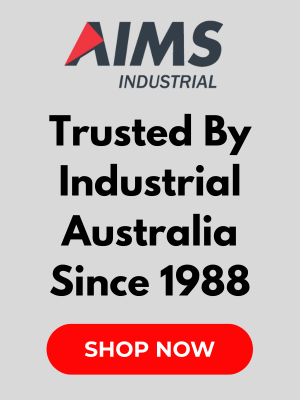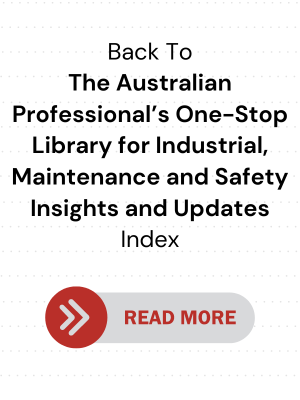Enhancing Workplace Safety: Strategies for Effective Asbestos Hazard Management in Industrial Settings

.png)
This guest post is written by Sebastian Tiller, who is the General Manager at Octfolio. He is passionate about making workplaces safer for everyone, one hazard at a time.
Asbestos hazard management is crucial in industrial settings due to its widespread use and the severe health risks associated with exposure. Effective management not only ensures compliance with health and safety regulations but also protects workers from long-term health issues. Industries must prioritise this to maintain a safe work environment and uphold their reputation for safety standards.
- Understanding asbestos hazards
- Regulatory framework (the legal framework surrounding asbestos management)
- Identification and assessment
- Asbestos management plan
- Training and awareness
- Safe removal and disposal
- Protective equipment and tools (for handling asbestos)
- Regular monitoring and health surveillance
Understanding asbestos hazards
Asbestos refers to a group of naturally occurring fibrous minerals known for their durability, fire resistance, and insulating properties. These fibers are microscopic, resilient to chemical and thermal degradation, and non-biodegradable, making them useful yet hazardous.
Historically, asbestos was used in numerous industrial applications, including insulation, fireproofing, and sound absorption. It was common in building materials like roofing shingles, ceiling and floor tiles, cement products, and automotive parts like brake pads. Despite its hazardous nature, these applications took advantage of its durability and resistance to heat.
However, asbestos exposure is linked to severe health risks, including asbestosis, lung cancer, and mesothelioma, a rare form of cancer. These risks are heightened in industrial settings where asbestos-containing materials may be disturbed. Long-term exposure significantly increases these health risks.
Regulatory framework
The legal framework surrounding asbestos management includes specific standards and regulations aimed at minimising exposure and ensuring safe handling. Laws mandate regular risk assessments, proper training for handling asbestos, and strict guidelines for removal and disposal.
Non-compliance with asbestos regulations in industrial settings can lead to severe consequences, including heavy fines, legal action, and reputational damage. More importantly, it risks the health and safety of workers, potentially leading to life-threatening illnesses. Hence, adherence to these regulations is not just a legal obligation but a moral imperative.
Identification and assessment
Effective risk assessment techniques in industrial premises involve a thorough inspection for asbestos-containing materials (ACMs), evaluating their condition, and determining the likelihood of disturbance. This process often includes air quality testing and material sampling.
Identifying potential ACMs requires knowledge of common asbestos applications and visual inspections. ACMs are often found in older buildings' insulation, tiles, and certain equipment. Professionals use various methods, including historical building records and sampling, to identify these materials accurately.
Asbestos management plan
An effective asbestos management plan includes a comprehensive inventory of ACMs, risk assessments, control measures, and a schedule for regular re-assessments and monitoring. It should also outline procedures for emergencies and detail training requirements for employees. This plan serves as a blueprint for maintaining safety in the presence of asbestos.
Efficient record-keeping and labeling of ACMs are vital for safety. Records should include details of the location, condition, and any work done on ACMs. Labeling helps in quickly identifying these materials, ensuring that they are handled correctly, and reducing accidental exposure.
Training and awareness
Training in safe handling practices and emergency response procedures is essential for employees working with or around asbestos. This training should include the proper use of personal protective equipment, safe work practices to minimize fiber release, and actions to take in the case of accidental exposure or discovery of undisturbed ACMs.
Increasing workplace awareness involves regular training sessions, displaying informational posters, and providing easy access to the asbestos management plan. Regular communication about the risks and safety procedures helps maintain a high level of awareness and promotes a culture of safety.
Safe removal and disposal
Safe asbestos removal requires specialised techniques to prevent fiber dispersion, such as wetting materials and using appropriate containment and filtration systems. Qualified professionals must perform the removal, adhering to strict guidelines to ensure minimal exposure and prevent contamination of the surrounding environment.
The disposal of asbestos materials must follow specific protocols to prevent environmental contamination and exposure risks. This includes sealing materials in labeled, leak-tight containers and transporting them to designated disposal sites. Compliance with legal disposal requirements is crucial for both environmental and public health.
Protective equipment and tools
Personal protective equipment (PPE) for handling asbestos includes respirators, protective clothing, gloves, and eye protection. These items are essential to prevent inhalation and skin contact with asbestos fibers. Selecting the appropriate PPE is critical for worker safety in environments where asbestos exposure is a risk.
Selecting and maintaining the right tools for asbestos handling is crucial to prevent fiber release. Tools should be designed to minimise disturbance of ACMs, and regular maintenance ensures they remain effective. Vacuum cleaners with HEPA filters, for example, are essential for safe cleanup.
Compliance with industry standards for safety gear ensures the effectiveness and reliability of PPE and tools used in asbestos handling. Regular inspections, adherence to maintenance schedules, and replacement of damaged equipment are key to maintaining compliance and ensuring worker safety.
Regular monitoring and health surveillance
Ongoing environmental monitoring in workplaces with asbestos is vital for detecting airborne fibers and assessing the effectiveness of control measures. Regular monitoring helps in identifying potential risks early and implementing corrective actions, thus ensuring a continuously safe work environment.
Health surveillance programs for workers exposed to asbestos are essential for early detection of asbestos-related diseases. These programs typically include regular health check-ups, lung function tests, and providing health information to workers.
Interpreting and acting on environmental and health monitoring data is crucial for effective asbestos management. This data helps in assessing the risk levels, the effectiveness of control measures, and the need for any changes in the management plan. Prompt action based on this data can prevent health hazards and ensure ongoing compliance.
Conclusion
Proactive safety measures in managing asbestos hazards are essential in industrial settings to protect worker health and comply with legal standards. Continuous education, effective risk management, and adherence to safety protocols are key components of a successful safety culture. Emphasizing the importance of these measures ensures a safer and more responsible industrial environment.
AIMS' Note on Buying PPE and Workwear
- Hazard assessment: Identify the specific hazards you will likely be facing in your work environment. Consider potential risks such as chemical exposure, falling objects, loud noises, electrical hazards or biohazards. This assessment will guide you in selecting the appropriate PPE for the job.
- Appropriate materials: Different materials offer various protective qualities. Consider flame-resistant (FR) materials for fire hazards, chemical-resistant fabrics for handling hazardous liquids and high-visibility options for work in low-light environments.
- Compliance to occupational safety standards: Opt for PPE that meets the pertinent Australia Standard (AS), although some brands -- especially imports -- will have other compliance markings such as ANSI, OSHA, ANSI, NIOSH, oSA etc. Look for certifications on the product label to ensure the equipment has undergone rigorous testing.
- Proper fit and comfort: Proper fit is crucial for both comfort, dexterity and protection. Ill-fitting clothing can snag on machinery or restrict movement, potentially creating additional hazards. Choose sizes that allow for layering in cold weather without being overly bulky and consider adjustable options for items like hard hats or respirators.
- Maintenance and replacement: Inspect PPE before each use for signs of wear, tear or damage. Follow (and factor in) the manufacturer's instructions for cleaning and storage. Some materials may require specialised laundering, while others can be machine-washed. Check for durability to ensure the clothing can withstand frequent use and cleaning. Replace damaged or expired PPE immediately to guarantee your safety.
- Training: Ensure you and any employees understand how to properly use, wear, adjust, maintain and store PPE and workwear. Improper use can negate its protective benefits.



.png)